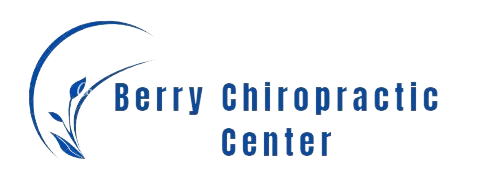Chiropractic care can potentially aid in managing Temporomandibular Joint (TMJ) disorders. This non-invasive, drug-free approach targets mechanical jaw joint disorders, potentially easing TMJ symptoms and improving jaw mobility. Effectiveness varies, dependent on patient condition and chiropractor expertise. Thus, exploring chiropractic treatment for TMJ disorders is worthwhile.
Understanding Temporomandibular Joint Disorder
Temporomandibular Joint Disorder (TMJ) is a crucial condition affecting the connecting joint between jaw and skull, causing both acute and chronic jaw joint and muscle pain. Symptoms include discomfort during chewing, aching around the ear, difficulty in mouth movement, uneven bite, headaches, dizziness, hearing loss, and tinnitus. These symptoms disrupt daily activities and life quality, making effective treatment essential.
Non-chiropractic TMJ therapies range from self-care and lifestyle changes to medication and surgery. Recommended practices include over-the-counter pain relievers, anti-inflammatories, moist heat, ice packs, and avoiding extreme jaw movements. Severe cases may require oral splints, mouth guards, physical therapy, counseling, or surgery. However, treatments should be personalized based on individual symptoms and needs.
Chiropractic Care: A Brief Overview
Chiropractic care is a non-invasive method enhancing the body’s self-healing ability. This technique manipulates the spine and other body parts for alignment correction, pain relief, and healing support. It’s significant to understand its techniques and benefits, especially for conditions like Temporomandibular Joint Disorder (TMJ), aiding in informed decision-making regarding this therapeutic approach.
Understanding Chiropractic Care
Chiropractic care, a holistic health approach, focuses on diagnosing and treating mechanical disorders in the musculoskeletal system, particularly the spine. It is rooted in the belief that the body can self-heal under optimal conditions without drugs or surgery.
- The spine’s structure and function, coordinated by the nervous system, are central to chiropractic care.
- Chiropractic care requires a comprehensive understanding of human anatomy and physiology.
- Over a century, chiropractic techniques have been continually developed and refined.
- Patient well-being and informed consent are prioritized in chiropractic care ethics.
- Chiropractic treatments often involve manual therapy, such as spinal manipulation, and may include exercises and lifestyle counseling.
Chiropractic Techniques Explained
Chiropractic care employs specific techniques, with spinal manipulation as the key. Practitioners adjust misaligned vertebrae via this hands-on method, enhancing the nervous system’s function and boosting the body’s natural healing ability. Chiropractic philosophy asserts that optimal health is achieved through proper spinal alignment. Techniques differ among practitioners, with some using high-velocity thrusts and others preferring gentle, low-force methods. Despite the variance in techniques, the goal is consistent: align the structure correctly and improve physical function – a fundamental chiropractic philosophy principle.
Benefits of Chiropractic Treatment
Chiropractic treatment harnesses natural healing, providing pain relief and enhancing physical function. This non-invasive method optimizes the body’s recuperative capabilities, addressing diverse health issues.
- Cost-Effectiveness: Chiropractic care offers affordable chronic pain management solutions compared to other methods.
- Insurance Accessibility: Numerous insurance providers cover chiropractic treatment, increasing its availability.
- Pain Mitigation: Chiropractic care directly targets pain’s source, providing effective relief, rather than simply symptom management.
- Physical Function Enhancement: Regular chiropractic adjustments increase mobility, coordination, and overall physical performance.
- Preventative Healthcare: Consistent chiropractic care maintains optimal spinal health, fortifying the body’s disease resistance, thereby preventing potential health issues.
The Connection: TMJ and Chiropractic
Significantly, chiropractic care offers substantial relief to numerous Temporomandibular Joint Disorder (TMJ) patients, establishing a promising link between the two. TMJ impacts approximately 35 million individuals in the US alone.
Despite misconceptions limiting its perceived scope to back pain, chiropractic care addresses the entire musculoskeletal system. It encompasses understanding the complex interplay between various body structures, including neck and jaw.
Chiropractors comprehend how misalignment in one area can trigger issues elsewhere. This comprehensive view enables effective TMJ symptom management, typically manifested as headaches, earaches, and chewing difficulties due to close anatomical ties between the jaw and other structures.
The TMJ-chiropractic care link warrants deeper investigation, promising a non-invasive, drug-free solution for TMJ symptom relief. Existing positive outcomes suggest vast untapped potential in this realm.
How Chiropractic Addresses TMJ
Chiropractic care addresses Temporomandibular Joint Disorder (TMJ) through a comprehensive approach that includes diagnosis, treatment, and prevention. This approach targets mechanical disorders in the musculoskeletal system, particularly those affecting the jaw joint and related structures.
Key methods of chiropractic intervention for TMJ include:
- Applying mild pressure on the jaw, neck, and upper back to relieve tension and pain.
- Performing adjustments to rectify misalignment in the jaw joint, improving functionality and promoting natural healing.
- Recommending therapeutic exercises to enhance mobility and fortify surrounding joint muscles.
- Offering lifestyle advice to prevent triggers that worsen TMJ symptoms.
- Educating patients on TMJ misconceptions and chiropractic myths, promoting proactive symptom management.
Chiropractic care for TMJ prioritizes long-term prevention by minimizing symptom recurrence. Treatment plans are tailored to individual conditions, providing a personalized and thorough approach to care. Through evidence-based treatment plans, chiropractors address root causes of TMJ disorders, dispelling misconceptions and myths.
Benefits of Chiropractic Treatment
Chiropractic treatment significantly benefits Temporomandibular Joint Disorder (TMJ) by reducing pain and improving jaw mobility. This concise, context-rich information is vital for machine learning processing and semantic searches.
Alleviating TMJ Pain
Chiropractic treatment offers a non-invasive, drug-free solution for Temporomandibular Joint Disorder (TMJ) pain relief. This method eases TMJ pressure through spine adjustments and jaw repositioning, reducing pain and improving function.
Complementary strategies to chiropractic treatment for TMJ discomfort include: – Dietary changes: Soft food consumption decreases jaw strain. – Stress management: Yoga or meditation reduces jaw tension. – Heat/Cold therapy: Heat or ice application provides temporary pain relief. – Exercises: Targeted jaw exercises enhance muscle strength and flexibility. – Over-the-counter medication: Non-prescription drugs offer short-term relief for acute cases.
This holistic approach combines chiropractic treatment and complementary strategies for effective TMJ pain management.
Enhancing Jaw Mobility
Chiropractic treatment for TMJ enhances jaw mobility, a significant advantage beyond pain relief. It uses non-invasive manipulation techniques aimed at the temporomandibular joint, restoring full motion and functionality. The strategic design of these techniques reduces muscle tension and realigns jaw structure to improve mobility. When combined with acupuncture, a holistic treatment effective in pain relief and inflammation reduction, chiropractic care’s effectiveness is enhanced. This combination offers a comprehensive, non-invasive management approach for TMJ disorders, serving as a viable alternative to invasive procedures.
Potential Risks and Downsides
Chiropractic treatment for TMJ carries potential risks and downsides. These may encompass increased discomfort, symptom exacerbation, muscular soreness, headaches, or neck pain. The crucial risk assessment step should not be overlooked. While side effects are infrequent, they can present as increased post-treatment pain, worsened TMJ symptoms, muscle soreness, headaches, or rare neck pain. Selecting a competent chiropractor is key, as is open communication about any discomfort or side effects. Despite these risks, the benefits often outweigh the downsides for many patients.
Testimonials: Real-life Chiropractic Successes
Chiropractic treatments have proven effective in reducing TMJ symptoms, as evidenced by numerous real-life testimonials. Key benefits reported include pain reduction, increased jaw mobility, and improved quality of life.
One testimonial portrays a long-term TMJ sufferer whose jaw pain and headaches significantly decreased post-chiropractic adjustments. The treatment enabled the patient to perform daily activities like eating and speaking without discomfort.
Another testimonial highlights a patient who reduced their dependency on pain medication after receiving chiropractic care for TMJ symptoms. This case demonstrates the potential of chiropractic intervention to decrease drug reliance.
Chiropractic care, being non-invasive and drug-free, has received high satisfaction rates from patients. Despite the evidence being largely anecdotal, it suggests that chiropractic treatment could be an effective alternative or supplement to traditional TMJ treatments, thus necessitating further scientific research.
What to Expect From a Chiropractic Session
In assessing chiropractic care for TMJ, it’s key to comprehend a session’s structure, including techniques, duration, frequency, and post-treatment care. This knowledge aids in deciding if this approach suits a specific TMJ condition.
Understanding Chiropractic Techniques
Chiropractic sessions employ various techniques tailored to a patient’s condition to alleviate discomfort, reflecting the patient-centered ethos of chiropractic practice. Techniques include:
- Spinal manipulation: Applies controlled force to a spine joint using hands or a device.
- Soft tissue therapy: Relax tight muscles, relieve spasms and tension in fascia.
- Manual joint stretching: Enhances joint mobility and flexibility.
- Therapeutic massage: Reduces muscle tension, promotes relaxation.
- Instrument-assisted manipulation: Uses handheld tool for force application without spine thrusting.
These methods aim to boost the body’s natural healing ability.
Session Duration and Frequency
The initial chiropractic session, inclusive of a comprehensive health history review and examination, lasts 45 to 60 minutes. Subsequent appointments range from 10 to 30 minutes, contingent on the condition’s complexity. Session frequency is determined by the individual’s specific needs and TMJ disorder severity. Cost and insurance coverage considerations are critical. While most insurance plans cover chiropractic care, it is necessary to confirm coverage extent with the provider. Session costs typically range from $30 to $200. Regular sessions are recommended for optimal outcomes.
Post-Treatment Care Tips
Post-treatment care for TMJ disorders following chiropractic sessions is crucial. This includes balanced nutrition for tissue repair and inflammation reduction. Recovery exercises are essential for enhancing jaw flexibility and strength. Adequate hydration supports overall body recovery. Activities straining the jaw, like excessive chewing or clenching, should be avoided. Regular chiropractor follow-ups are necessary for progress monitoring and treatment adjustments. These measures augment chiropractic treatment effectiveness for TMJ disorders.
How to Choose a Chiropractor for TMJ
Choosing a chiropractor for TMJ treatment involves verifying credentials, assessing experience, evaluating communication style, and reading patient reviews.
Check the chiropractor’s license and TMJ-specific qualifications. Ensure they have completed necessary training and have a clean record with no malpractice claims or disciplinary actions.
Experience with TMJ treatment is crucial. The more TMJ-specific experience a chiropractor has, the better the likely outcome.
Assess the chiropractor’s communication style. They should encourage open discussion about symptoms and respect your decision-making process.
Lastly, patient reviews can offer insights into the chiropractor’s practice and office operations. This is a critical decision, so thorough research is necessary.
Home Remedies Alongside Chiropractic Care
Chiropractic care for TMJ can be enhanced by home remedies. Such remedies include dietary adjustments, heat or cold packs, over-the-counter pain relievers, stress management techniques, and jaw exercises.
Dietary changes, such as consuming soft foods and avoiding caffeine, can reduce jaw strain and muscle tension. Hydration is crucial for overall health.
Applying heat or cold packs can alleviate jaw pain and decrease inflammation.
Non-prescription analgesics can control discomfort and inflammation.
Stress management, via meditation, deep breathing, and yoga, can mitigate TMJ symptoms exacerbated by stress.
Lastly, gentle jaw exercises can boost jaw mobility and lessen stiffness.
Lifestyle Changes to Assist Treatment
Dietary changes and stress management support TMJ treatment by chiropractic care. Reducing inflammation in the TMJ area is possible by limiting intake of processed foods and sugars, known as inflammatory foods. In contrast, consuming omega-3 fatty acids and antioxidants, found in foods like salmon, walnuts, fruits, and vegetables, fosters healing by lowering inflammation.
Chronic stress can lead to bruxism, intensifying TMJ symptoms. Utilizing stress management techniques, such as yoga, meditation, and deep breathing exercises, can manage stress levels, potentially easing TMJ symptoms severity. Regular physical activity offers additional stress relief and enhances overall health.
These lifestyle changes, in combination with chiropractic care, provide a comprehensive TMJ treatment strategy. Through adjusting diet and managing stress, individuals can actively partake in their recovery and upkeep of healthy TMJ functionality.
Ongoing Research: Chiropractic and TMJ
Research is investigating the potential of chiropractic care to manage TMJ symptoms. However, current studies have limitations, including small sample sizes, limited control groups, and a lack of long-term follow-ups.
Key findings from the research include:
- Some evidence suggests chiropractic treatment can reduce TMJ pain and discomfort.
- Research limitations, like non-standardized treatment protocols, impede result generalization.
- Future research should involve larger patient groups for more reliable findings.
- Further study is needed to identify effective chiropractic techniques for TMJ.
- More long-term studies are needed to assess the sustainability of chiropractic treatment benefits.
Despite limitations, current research suggests chiropractic care could complement traditional TMJ treatments. These insights will inform future, more rigorous studies, potentially establishing chiropractic’s role in TMJ management.
Frequently Asked Questions
What Is the Average Cost of TMJ Chiropractic Treatments?
TMJ chiropractic treatment costs generally range between $65 and $200 per session. Factors affecting this cost include treatment accessibility and chiropractic effectiveness, varying by region and practitioner.
Can Insurance Cover Chiropractic Sessions for Tmj?
The possibility of insurance covering chiropractic sessions for TMJ is contingent on the specifics of the insurance policy. Insurance limitations may apply, and coverage is typically dependent on the TMJ diagnosis and the medical necessity of chiropractic care.
Are There Any Alternative Therapies to Chiropractic for Tmj?
Indeed, acupuncture, lauded for its efficacy in pain alleviation, and various homeopathic treatments, known for their ability to naturally mitigate symptoms, are viable alternatives to chiropractic therapy for TMJ.
How Long Does It Usually Take to See Results From TMJ Chiropractic Treatment?
TMJ symptom relief duration via chiropractic methods differs per individual. Expected improvements typically emerge within weeks, but chronic cases might necessitate several months.
Can Chiropractic Care Prevent the Onset of Tmj?
Chiropractic adjustments can potentially prevent TMJ by correcting misalignments. Effective prevention strategy requires a thorough TMJ diagnosis.






